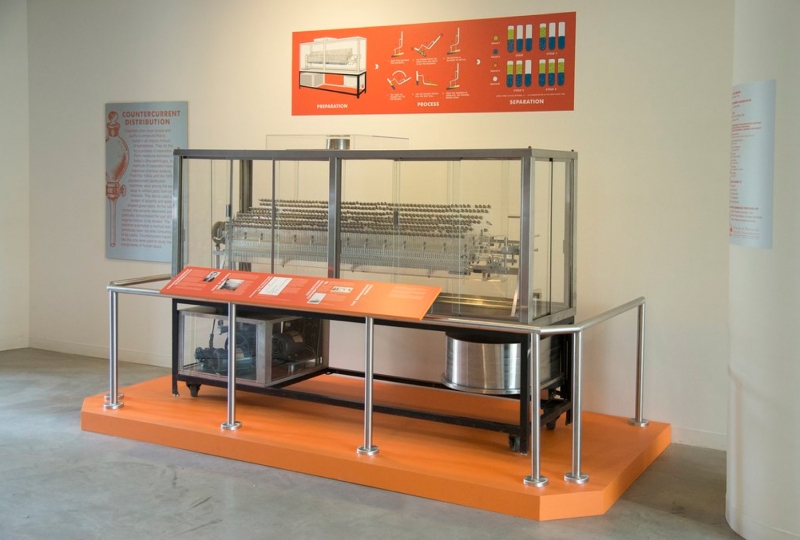
A Countercurrent Distribution Machine
Inventory Number: 2014-1-0230
Our understanding of chemistry depends on our ability to separate complicated mixtures into simpler substances. From Medieval distillation to today's ultra-centrifuges, new methods of separation have marked chemistry's development. Each method takes advantage of subtle distinctions in the properties of different materials. The countercurrent distribution apparatus used differences in solubility to separate delicate organic compounds. The machine passed the dissolved material through a series of glass tubes and gradually concentrated parts of the mixture in different cells. It automated a process that had been too time consuming to be useful and allowed researchers to study new materials, like the components of malaria medicine or the constituents of human blood.
Countercurrent Distribution was developed in the late 1940s by Lyman Craig, a biochemist at Rockefeller University, and Otto Post, a machinist and glassblower. The machine pictured above was used by Professor Guido Guidotti here at Harvard. Guidotti came to Harvard in 1963 where he continued his research on hemoglobin with this countercurrent machine. It was installed in a room by itself on the top floor of the Biological Laboratories building, where the noise of its motors and the fumes of the solvents would not bother anyone.
Guidotti used that machine from the early 1960s when he arrived as a faculty until the early 1970s. When Guidotti moved to the Sherman Fairchild Biochemistry building in 1981, the machine followed but was no longer in use. The machine was moved to a storage location in the Northwest Labs when the Sherman Fairchild building was renovated in the early 2010s to accommodate the Stem Cell and Regenerative Medicine Department. The machine was acquired by the CHSI in 2014. It has been on exhibit in the Northwest Labs at Harvard since October 2015.
Prof. Guido Guidotti interviewed in The Harvard Undergraduate Research Journal.
Audio interview with Prof. Guidotti, June 2015.
Explore this instrument in Waywiser.

